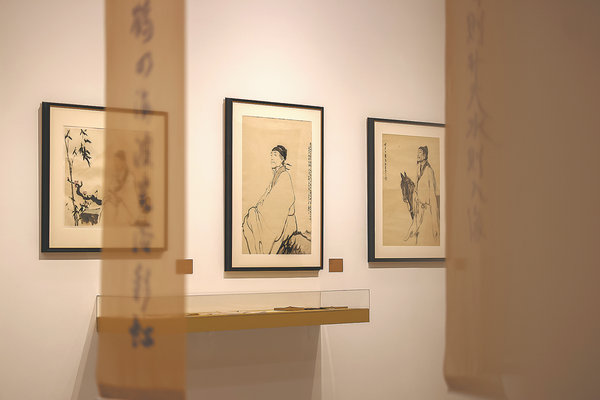

New portraiture
Jiang, who basically taught himself to paint, sculpt and design, became a professor of Chinese painting at the Central Academy of Fine Arts in 1950, under the deanship of Xu Beihong, another great modern artist who favored a realistic approach to art.
Jiang continued to hail the ordinary in creation.
His subjects were farmers and workers engaged in the booming construction after the founding of the People's Republic of China, and families spending time together in an era of peace.
Meanwhile, he blazed a new trail in Chinese figure painting, beginning in the 1950s and through to the 1980s, the late years of his life: doing portraits of ancient luminaries which he saw as hugely important to carry on the country's history and cultural legacies.
He created images of figures from literature and science living centuries back, and the Du Fu portraits were from this time. Other subjects included Tang Dynasty poets Li Bai and Bai Juyi, Su Dongpo of the Song Dynasty (960-1279), Li Shizhen, the 16th-century pharmacologist who authored Bencao Gangmu (Compendium of Materia Medica), and Zhang Heng, the Han Dynasty (206 BC-AD 220) scientist who invented the seismoscope for earthquake registering.
These works have been featured in school books, magazines and stamps and at exhibitions at public museums, which have become the collective imagery for generations of Chinese and an integral part of the visual art system of modern China.